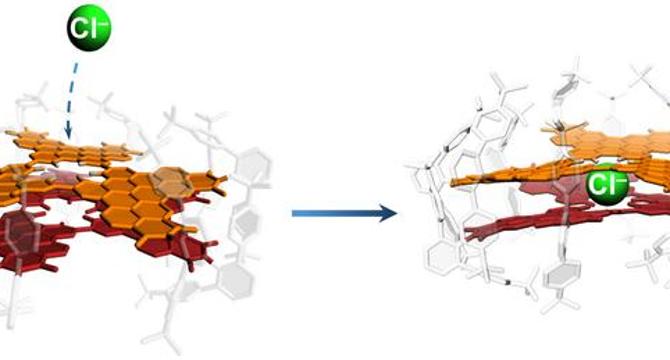Bioengineer
1w
194

Image Credit: Bioengineer
Graphene Achieves Ion Permeability: A Breakthrough in Material Science
- Researchers have engineered a double-layered nanographene structure that can trap fluoride, chloride, and bromide halide ions within a confined cavity and exhibit selective permeability. The successful creation of this model has implications in water purification technologies, selective ion detection systems, and the development of synthetic membranes exhibiting targeted ion transport capabilities. The research team aims to analyze the flow of ions more comprehensively, mimic biological ion channels, and investigate larger stacks of nanographenes to optimize other nanostructured materials in various applications. This breakthrough underscores not only the capabilities of modern materials science but also the profound implications of such discoveries.
- Selective ion binding and high permeability of chloride through the nanographene lattice pave the way for potential advancements in water purification technologies and selective ion detection systems.
- By refining and expanding the design of defect-engineered materials, future studies will likely delve deeper into harnessing graphene’s capabilities for tackling modern day challenges.
- The funding and resources for this pioneering research were generously provided by the German Research Foundation, highlighting the crucial support from academic institutions for innovative studies that promise to enhance technological capabilities.
- The intersection of chemistry, engineering, and biology showcases the boundless potential waiting to be unlocked within materials like graphene, propelling researchers towards future discoveries that may one day change the fabric of technology as we know it.
- The study not only holds practical applications but also provides insights into material interactions at the molecular level and unique properties of advanced materials.
- The successful engineering of selective permeability in nanographenes emphasizes the potential for versatile, highly functional nanomaterials equipped to tackle modern day challenges.
- The prospects for expanding the functionality of nanographenes are promising, with future studies likely refining and expanding the design of defect-engineered materials to harness graphene’s capabilities.
- As knowledge advances, so too does the possibility of translating theoretical discoveries into practical applications that could transform industries and improve the quality of life globally.
- The collaborative efforts and innovative ideas burgeoning from institutional support will undoubtedly pave the way for a brighter, more efficient technological future.
Read Full Article
11 Likes
For uninterrupted reading, download the app